
Four legions were considered enough to conquer Britain, and this was probably the number decided under Caligula (r.37-41 CE). These were the legions 2nd Augusta, 9th Hispana, 14th Gemina and the 20th Valeria Victrix, drawn from other parts of the empire, including the Rhine frontier. Their availability suggests the long-standing planning involved in the invasion, because moving such units at short notice would’ve left a gap in the defence of a frontier. Supporting these legions was probably an equal number of auxiliary and supporting troops.
Many of our sources are frustratingly incomplete or they don’t give us all the information we would like. Suetonius names only one commander, Plautius, whereas Eutropius (writing 300 years later) mentions two: Plautius and Saturninus. We don’t know if there were two battle groups or anything about the invasion plan. It is possible there were two invasion axis points: one at Rutupiae, at the Isle of Thanet, and the other near Chichester in West Sussex. In later invasions of Britain (when it broke away from the empire), two invasion points were utilised.
The fort at Rutupiae (modern-day Richborough) seems to have been one landing point, and it still has the remains of a triumphal arch built to commemorate Claudius’ conquest. The invasion may also have used supplies and logistics put in place with client kings such as Togodumnus, king of the Catuvellauni tribe based at St Albans.
Esta historia es de la edición Issue 106, 2022 de History of War.
Comience su prueba gratuita de Magzter GOLD de 7 días para acceder a miles de historias premium seleccionadas y a más de 9,000 revistas y periódicos.
Ya eres suscriptor ? Conectar
Esta historia es de la edición Issue 106, 2022 de History of War.
Comience su prueba gratuita de Magzter GOLD de 7 días para acceder a miles de historias premium seleccionadas y a más de 9,000 revistas y periódicos.
Ya eres suscriptor? Conectar

NAUMACHIA TRUTH BEHIND ROME'S GLADIATOR SEA BATTLES
In their quest for evermore novel and bloody entertainment, the Romans staged enormous naval fights on artificial lakes
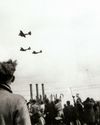
OPERATION MANNA
In late April 1945, millions of Dutch civilians were starving as Nazi retribution for the failed Operation Market Garden cut off supplies. eet as In response, Allied bombers launched a risky mission to air-drop food
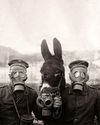
GASSING HITLER
Just a month before the end of WWI, the future Fuhrer was blinded by a British shell and invalided away from the frontline. Over a century later, has the artillery brigade that launched the fateful attack finally been identified?
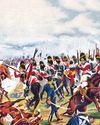
SALAMANCA
After years of largely defensive campaigning, Lieutenant General Arthur Wellesley went on the offensive against a French invasion of Andalusia

HUMBERT 'ROCKY'VERSACE
Early in the Vietnam War, a dedicated US Special Forces officer defied his merciless Viet Cong captors and inspired his fellow POWs to survive
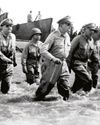
LEYTE 1944 SINKING THE RISING SUN
One of the more difficult island campaigns in WWII's Pacific Theatre saw a brutal months-long fight that exhausted Japan’s military strength

MAD DAWN
How technology transformed strategic thinking and military doctrine from the Cold War to the current day
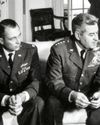
BRUSHES WITH ARMAGEDDON
Humanity came close to self-annihilation with the Cuban Missile Crisis, Broken Arrows’ and other nuclear near misses
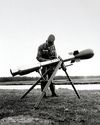
THE DEADLY RACE
How the road to peace led to an arms contest between the USA and USSR, with prototypes, proliferation and the world’s biggest bomb

THE MANHATTAN PROJECT
Einstein, Oppenheimer and the race to beat Hitler to the bomb. How a science project in the desert helped win a war